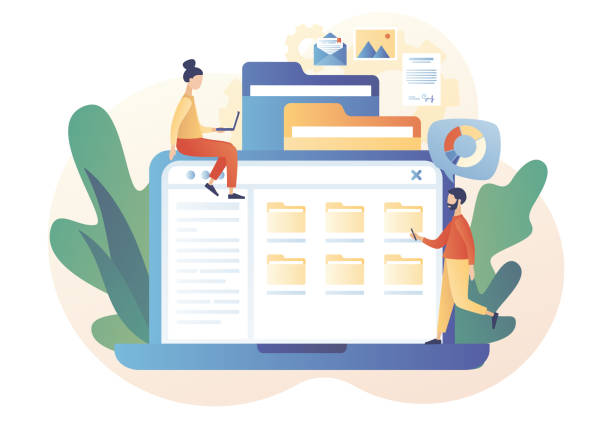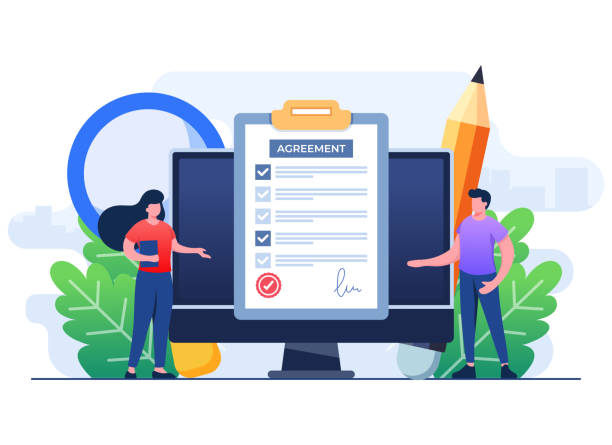An Introduction to Secure Website Design and Its Importance
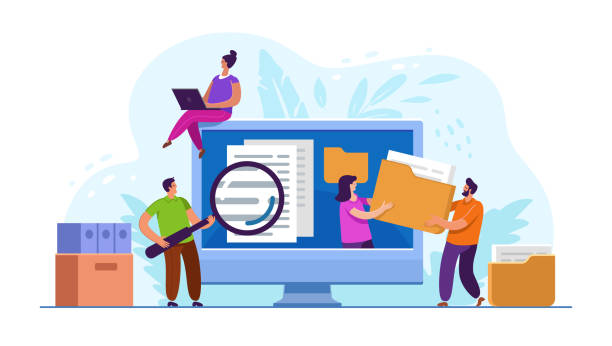
In today’s digital world, where information travels at lightning speed, #Secure_Website_Design is no longer a luxury choice, but an unavoidable necessity.
Every website, from a simple personal blog to large e-commerce platforms, is exposed to various cyber threats.
The goal of secure website design is to create a stable and reliable online environment that protects both sensitive user data and the website’s own infrastructure.
Without a comprehensive approach to security, websites can fall victim to attacks such as phishing, malware attacks, data breaches, and even service outages.
These issues not only damage business credibility but can also lead to loss of customer trust, heavy legal fines, and significant financial losses.
The high importance of website security is more evident than ever in an era where cyber threats are becoming increasingly complex and widespread.
A correct approach to this issue requires a comprehensive security plan that covers all aspects of a website, from initial design to continuous maintenance and updates.
In the following sections of this specialized article, we will delve deeper into various aspects of website security and provide practical and explanatory solutions to help you improve your site’s security.
This educational section serves as a guide for understanding the foundations of web security.
Does your current e-commerce website design not generate the expected sales for you?
Rasaweb is a specialist in professional e-commerce website design!
✅ An attractive and user-friendly site aimed at increasing sales
✅ High speed and security for an ideal shopping experience⚡ Get a free consultation for online store design with Rasaweb!
Understanding Common Web Threats and Countermeasures

On the path to secure website design, understanding potential threats is the first step.
#Cyber_attacks come in various types, each requiring specific countermeasures.
One of the most common and dangerous attacks is SQL Injection, which allows an attacker to inject malicious SQL code into website input fields and gain access to the database.
To counter this threat, the use of Prepared Statements and parameterized queries is essential.
Another frequently observed threat is Cross-Site Scripting (XSS), where an attacker injects malicious code (usually JavaScript) into legitimate web pages, causing it to execute in other users’ browsers.
To prevent XSS, all user inputs must be carefully validated, and outputs must be properly encoded.
Cross-Site Request Forgery (CSRF) is another type of attack where an attacker tricks a user into clicking a link or submitting a form, performing unintended actions on other websites.
Using CSRF tokens for every sensitive request is an effective prevention method.
Brute-Force and DDoS attacks are also constant serious threats.
Using Captcha, limiting request rates, and Web Application Firewalls (WAF) can help mitigate the effects of these attacks.
Understanding these vulnerabilities and implementing specialized solutions to counter them is a vital part of the process of ensuring site security and building a secure and stable website.
This explanatory and analytical information is essential for any developer looking for secure website design.
Choosing a Secure Platform and Host for Your Site
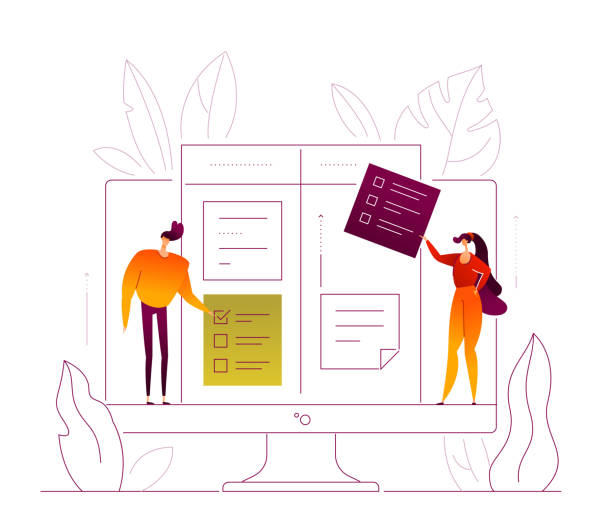
The correct choice of platform and hosting provider forms the basis of your #site_security.
#Secure_infrastructure is one of the most important pillars of secure website design.
Content Management Systems (CMS) like WordPress, Joomla, or Drupal are very popular.
Although these platforms offer many features, they have a history of cyber attacks due to insecure plugins and themes.
Therefore, always use original and updated versions and only install plugins and themes from reputable sources.
Regarding hosting, choosing a reputable service provider with a strong security track record is crucial.
Shared hosting is often cheaper but may have security vulnerabilities because server resources are shared among multiple websites, and security issues on one website can spread to others.
In contrast, Virtual Private Servers (VPS) or Dedicated Servers offer more control over security.
When choosing a host, pay attention to features such as firewalls, Intrusion Detection Systems (IDS), regular backups, free or affordable SSL certificates, and strong technical support.
Reputable providers usually have transparent security policies and continuously update their systems.
This section is a guide to choosing the best infrastructure for your secure website.
| Hosting Type | Security Advantages | Security Disadvantages | Suitable for |
|---|---|---|---|
| Shared Hosting | Low cost, easy management, hosting provider support | Shared vulnerabilities, limited security control, susceptibility to other sites | Personal websites, small blogs, startups |
| Virtual Private Server (VPS) | More control, better isolation, ability to install custom security software | Requires more technical knowledge for security management, moderate cost | Medium-sized businesses, high-traffic websites |
| Dedicated Server | Highest level of security and control, dedicated resources, optimal performance | Highest cost, requires security specialist and server management | Large organizations, banks, websites with sensitive data |
A secure host is the first layer of defense for ensuring secure website design.
This explanatory article helps you in deciding for a secure website.
Security in Coding and Website Development

The heart of every website is its coding, and #secure_coding is a fundamental pillar of secure website design.
Developers should work with a “security by design” approach from the outset, rather than adding security to the system after development is complete.
One of the key principles is Input Validation.
Any data received from the user must be carefully checked to ensure it has the correct type, format, and size, and does not contain malicious code.
Validation on both the client-side and server-side is crucial; server-side validation is more reliable because an attacker cannot bypass it.
Another principle is secure output (Output Encoding).
Any data retrieved from the database and displayed on the page must be properly encoded to prevent attacks like XSS.
This ensures that the browser interprets the data as text and not executable code.
Proper error and log management is also of high importance.
General error messages should be used instead of displaying technical details that could provide information to an attacker.
Accurate logging of system activities and security events helps in identifying and tracking attacks.
For database communication, using ORM (Object-Relational Mapping) or Prepared Statements is highly recommended to prevent SQL Injection attacks.
Also, use strong hashing functions like SHA-256 or bcrypt to store passwords and never store them in plain text.
An educational and specialized approach to coding can help build a secure website.
These guidelines are essential for any team looking for secure website design.
Does your company’s website create a professional and lasting first impression in the minds of potential customers? Rasaweb, with its professional corporate website design, not only represents your brand’s credibility but also opens a path for your business growth.
✅ Creating a powerful and trustworthy brand image
✅ Attracting target customers and increasing sales
⚡ Get a free consultation
Identity Management and Strong Authentication

Identity management and #strong_authentication processes are inseparable pillars of secure website design.
#Access_control ensures that only authorized users have access to specific information and functionalities.
The first step in this path is enforcing the use of strong passwords.
This means a minimum length, a combination of uppercase and lowercase letters, numbers, and special characters.
Additionally, the system should prevent password reuse and encourage users to periodically change their passwords.
Multi-Factor Authentication (MFA) adds a crucial security layer.
With MFA, in addition to a username and password, the user must provide a second factor to verify their identity, such as a code sent to a mobile phone or a fingerprint.
This method prevents unauthorized access even if the password is compromised.
Session Management is also very important.
Sessions should have a limited lifespan and expire after a period of inactivity.
Session tokens must be randomly generated and transmitted only via HTTPS to prevent session hijacking.
After user logout, the session should be immediately invalidated.
For managing user access and roles, implementing Role-Based Access Control (RBAC) models is recommended.
This model ensures that users only have the minimum necessary privileges to perform their tasks (principle of least privilege).
This is a specialized and educational guide for developers who want to optimize login and authentication processes on a secure website.
Secure website design, by focusing on these aspects, brings high credibility and security.
Encryption Protocols and Secure Communications
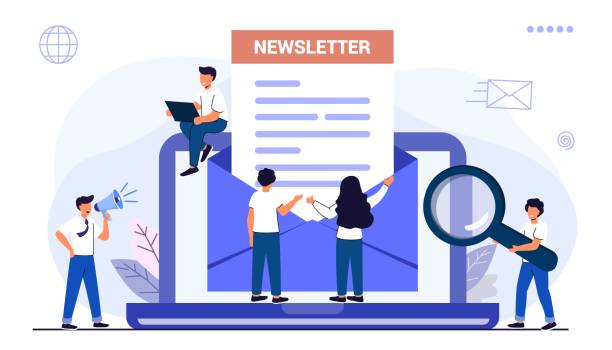
Data encryption, especially during information transfer, is a fundamental principle of secure website design.
#HTTPS_protocol not only helps protect user information from interception but is also an important factor in improving SEO ranking.
HTTPS (Hypertext Transfer Protocol Secure), through SSL (Secure Sockets Layer) or TLS (Transport Layer Security) protocols, encrypts communications between the user’s browser and the website server.
This encryption ensures that exchanged data, such as login information, credit card details, and personal data, remain out of reach of attackers.
To implement HTTPS, you need an SSL/TLS certificate.
This certificate is issued by a Certificate Authority (CA) and verifies your website’s identity.
There are various types of SSL certificates, from Domain Validated (DV) certificates, which are cheaper and issued faster, to Organization Validated (OV) and Extended Validation (EV) certificates, which offer a higher level of trust and authentication.
Ensure that all your site’s content is served over HTTPS to prevent “Mixed Content” warnings, which can affect user experience and SEO ranking.
In addition to encryption during transit, encryption of data “at rest” is also important, meaning data stored in the database or server file system should also be encrypted.
This analytical and explanatory section emphasizes the importance of security protocols for a secure website and is an integral part of any secure website design.
The Role of Firewalls and WAF in Secure Website Design

Firewalls and Web Application Firewalls (WAFs) play a vital role in strengthening secure website design.
A #hardware_or_software_firewall acts like a guard that filters and controls incoming and outgoing network traffic based on a set of predefined rules.
These systems can prevent unauthorized access, simple DDoS attacks, and unwanted port scanning attempts.
Alongside traditional firewalls, WAF (Web Application Firewall) is a more specialized defense layer for website security.
Unlike network firewalls that focus on general traffic, a WAF specifically examines HTTP/HTTPS traffic and is capable of identifying and blocking attacks at the application layer (Layer 7) such as SQL Injection, XSS, and CSRF, which ordinary firewalls cannot detect.
A WAF can be implemented either as software (on the web server), hardware, or cloud-based (Cloud WAF).
Cloud WAFs have gained significant popularity due to their ease of deployment, high scalability, and continuous threat updates.
These services filter traffic before it reaches your main website server, offloading the security burden from the primary server.
This is a specialized guide that can significantly help in increasing your website’s security.
Using a powerful WAF is a smart investment for anyone looking for secure website design and protecting their critical data.
This explanatory and analytical section clarifies the importance of these tools.
| Feature | Firewall | WAF (Web Application Firewall) |
|---|---|---|
| Coverage Scope | Protection at network and transport layers (OSI Layers 3 and 4) | Protection at the application layer (OSI Layer 7) |
| Traffic Type | All network traffic (TCP, UDP, ICMP, etc.) | HTTP/HTTPS traffic |
| Main Threats Countered | Port scanning, network-level DDoS attacks, basic unauthorized access | SQL Injection, XSS, CSRF, File Inclusion, API Abuse |
| Level of Intelligence | Based on IP address, port, protocol | Based on analysis of request and response content, signatures, web security rules |
| Main Application in Secure Website Design | First layer of network defense | Advanced protection for web applications themselves |
Backup, Updates, and Continuous Monitoring
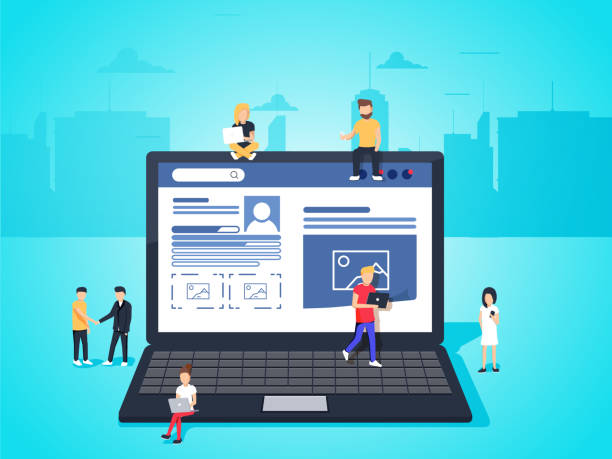
Secure website design is not a one-time process; rather, it requires #continuous_and_active_maintenance.
#Regular_updates of software and systems are of paramount importance.
This includes the server operating system, CMS platform (like WordPress), themes, plugins, and any libraries or frameworks used on the website.
Developers constantly discover vulnerabilities and release security patches.
Failure to update can leave the door open for attackers.
Regular and reliable backups of all website data and databases are a vital insurance policy.
In the event of a cyber attack, hardware failure, or human error, having a recent backup allows you to quickly restore the website.
Backups should be stored in secure and separate locations (off the main server) and periodically tested to ensure their integrity and recoverability.
Continuous security monitoring is also essential for early detection of suspicious activities.
This includes reviewing server logs, using Intrusion Detection Systems (IDS) and Intrusion Prevention Systems (IPS), and website performance monitoring tools for signs of DDoS attacks or unauthorized changes.
Incident Response Planning is also of high importance; know what steps to take in the event of a security breach.
This informative and guiding section demonstrates the importance of active management for maintaining website security and stability.
A secure website is the result of continuous effort.
Did you know that 94% of users’ first impressions of a business are related to its website design? With professional corporate website design by **Rasaweb**, transform this initial impression into an opportunity for growth.
✅ Attracting more customers and increasing sales
✅ Building credibility and trust in the eyes of the audience⚡ Get a free website design consultation!
User Privacy and Relevant Regulations

Alongside secure website design, #user_privacy_protection and compliance with relevant regulations are an inseparable part of every website owner’s responsibilities.
#Data_protection goes beyond merely preventing cyber attacks and includes how users’ personal information is collected, stored, and used.
With strict regulations like GDPR (General Data Protection Regulation) in Europe and CCPA (California Consumer Privacy Act) in California, non-compliance can lead to heavy fines and loss of credibility.
Transparency in data collection is a key principle.
Users must be clearly informed about what information is collected, how it is used, and with whom it is shared.
This information is usually included in the website’s “Privacy Policy,” which should be easily accessible.
Obtaining explicit consent from users, especially for the use of cookies and activity tracking, is essential.
Implementing Privacy by Design means that privacy considerations must be taken into account from the very beginning of system and process design and development.
This includes minimizing data collection, anonymizing or pseudonymizing data where possible, and ensuring that data is only used for its intended purpose.
Regular security and privacy audits, such as Data Protection Impact Assessments (DPIA), can help identify and mitigate risks.
This thought-provoking and analytical section highlights the vital role of privacy protection in secure websites and the ethical and legal responsibilities associated with secure website design.
Future Challenges and the Outlook for Secure Website Design

The world of #cyber_security is constantly evolving, and secure website design is no exception.
#Emerging_threats are constantly taking shape, and web developers must prepare to counter them.
One such challenge is AI and machine learning-based attacks.
Attackers use AI to automate attacks, identify vulnerabilities, and even generate new malware.
In contrast, defenders also leverage AI for anomaly detection and faster threat response.
Software supply chain security has also become a growing concern.
An attack on a small component in the supply chain (such as an open-source library or a third-party service) can lead to widespread vulnerabilities in many websites.
Close monitoring of all dependencies and ensuring their security will be crucial.
With the expansion of the Internet of Things (IoT) and its convergence with the web, attacks on IoT devices and their use as entry points to web networks pose new challenges.
Developing stronger security protocols for IoT and secure APIs for interacting with them is essential.
Concepts like Zero Trust Security, which emphasizes not trusting any user or device, even within the network, are gaining popularity.
This analytical and engaging approach shows that the future of secure website design requires continuous innovation and readiness for unknown challenges.
News and developments in this field daily teach us new lessons to move towards safer websites.
Frequently Asked Questions
| Row | Question | Answer |
|---|---|---|
| 1 | What is secure website design? | Secure website design is a process in which websites are built with security measures in mind from the initial development stages to protect against cyber attacks, unauthorized access, and data loss. |
| 2 | Why is secure website design important? | Site security is crucial for maintaining user trust, protecting sensitive information (personal and financial), preventing damage to brand reputation, and complying with privacy and security regulations (such as GDPR). A security breach can lead to financial and legal damages. |
| 3 | What are the most common cyber attacks a website faces? | Some of the most common attacks include SQL Injection, Cross-Site Scripting (XSS), Distributed Denial of Service (DDoS), Brute Force, and Credential Stuffing attacks. |
| 4 | What is SQL Injection and how can it be prevented? | SQL Injection is a type of attack where an attacker attempts to manipulate the database or extract information by injecting malicious SQL code into site inputs. To prevent it, one should use Prepared Statements/Parameterized Queries, ORM (Object-Relational Mapping), and precise input validation. |
| 5 | What is Cross-Site Scripting (XSS)? | XSS is a type of attack where an attacker injects malicious scripts (usually JavaScript) into web pages, which are then executed by other users’ browsers. This can lead to the theft of cookies, session information, or alteration of the website’s appearance. |
| 6 | How can Brute Force attacks on login pages be prevented? | To prevent Brute Force attacks, one should use CAPTCHA, limit the number of failed login attempts (Account Lockout), Two-Factor Authentication (2FA), and use complex and long passwords. |
| 7 | What is the role of HTTPS in website security? | HTTPS encrypts the communication between the user’s browser and the website server using SSL/TLS. This prevents eavesdropping, tampering, or forgery of information during transmission and increases user trust. |
| 8 | What is the importance of Input Validation in security? | Input validation is the process of checking and sanitizing data entered by the user. This prevents the injection of malicious code, XSS attacks, SQL Injection, and other vulnerabilities, ensuring that the data conforms to the expected format. |
| 9 | Why are regular updates of website systems and software essential? | Regular updates of the operating system, CMS (like WordPress), plugins, themes, and libraries used address known security vulnerabilities. Hackers often exploit weaknesses in outdated software to penetrate systems. |
| 10 | What role do regular backups play in secure website design? | Regular and tested backups of website information (database and files) are a vital layer of defense against data loss due to cyber attacks, human errors, or hardware failures. This allows for quick website recovery in case of a disaster. |
And other services of Rasaweb Advertising Agency in the field of advertising
Smart Social Media: Professional optimization for digital branding using key page optimization.
Smart Marketing Automation: Professional optimization to increase click-through rates using attractive UI design.
Smart Sales Automation: Revolutionize online growth with the help of intelligent data analysis.
Smart Customer Journey Map: A fast and efficient solution for digital branding focusing on Google Ads management.
Smart Marketing Automation: An effective tool to improve SEO ranking with precise audience targeting.
And over a hundred other services in the field of internet advertising, advertising consultation, and organizational solutions
Internet Advertising | Advertising Strategy | Advertorials
Resources
Comprehensive Guide to Site SecurityPrinciples of Secure and Reliable Website DesignProtecting User Privacy on the WebSite Security Principles for Developers
? Is your business ready to leap into the digital future? Rasaweb Afarin Digital Marketing Agency, by providing comprehensive services including website design with a modern user interface, SEO, and social media management, paves the way for your success. Contact us today and transform the future of your brand.
📍 Tehran, Mirdamad Street, Next to Central Bank, Southern Kazeroun Alley, Ramin Alley No. 6

